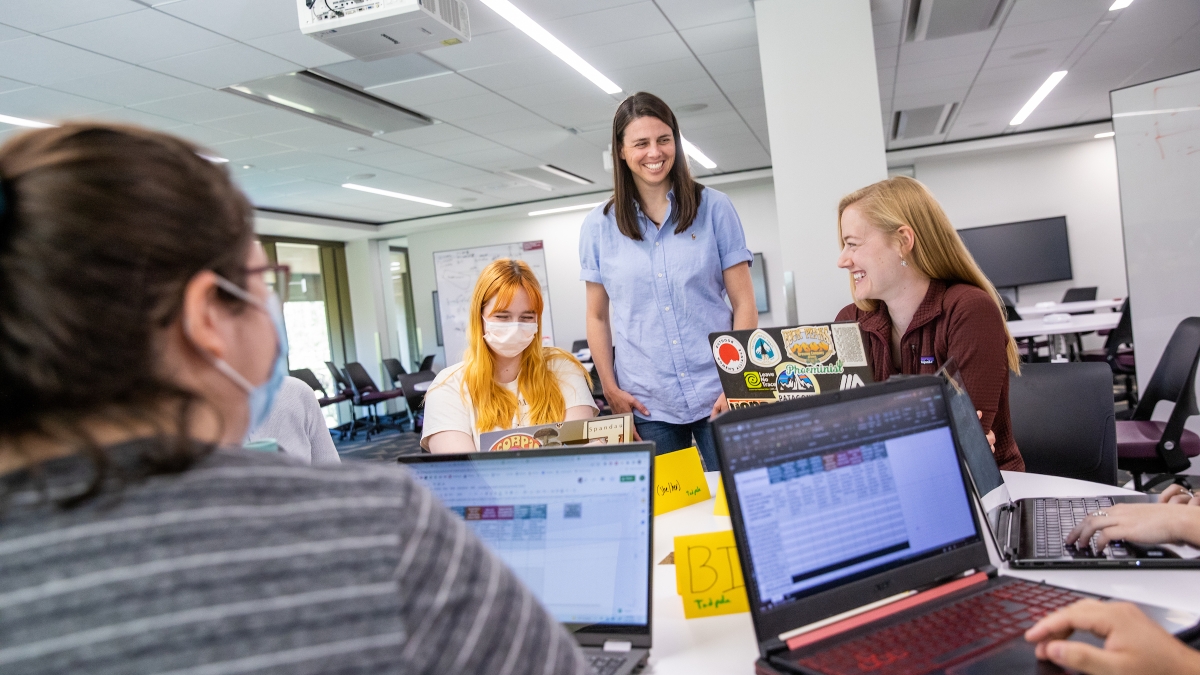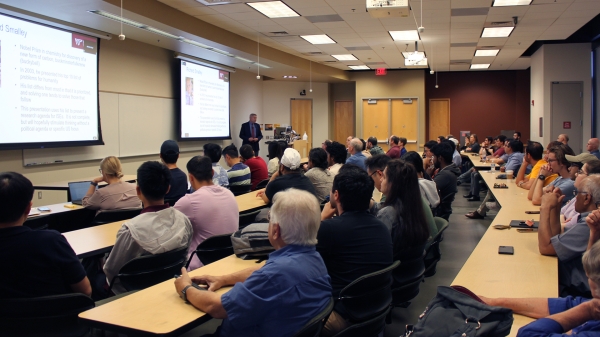Study looks at sharing stigmatized identities in academic STEM settings
Female faculty more likely to share concealable identities even if they feel more stigma

When Sara Brownell meets her new students each semester, she explains the curriculum, office hours and her grading system. The Arizona State University professor may mention that she is a trained neuroscientist with a degree from Stanford University. Oh, and at some point in the conversation, Brownell will slip in the fact that she is a member of the LGBTQ+ community.
"I don't do it for myself," said Brownell, who has a passion for making science classes more inclusive. "I do it for the students."
The School of Life Sciences researcher concedes that by revealing her identity, she can serve as a role model and inspiration for students in the STEM field, an area that has traditionally kept personal information outside of the classroom.
The subject of faculty revealing concealable stigmatized identities in science and engineering classes led to Brownell having some questions. Why don't more instructors reveal their concealed identity to students? Are those that do then stigmatized? And how beneficial is this practice?
All of this and more is the subject of Brownell’s latest study on stigmatized concealable identities, which was published this month in PLOS ONE. Assistant Professor Katelyn Cooper and PhD student Carly Busch were also researchers on the study, which was funded by a National Science Foundation IUSE grant.
ASU News spoke with Brownell about her study and its implications in academic settings.
Question: Can you start by explaining the study?
Answer: Yes, essentially, we're really interested in identities that instructors have, that are not visible — that are potentially concealable. We're interested in who has these identities and whether they share them with students.
Right now, students basically just get role models from instructors with visible identities. So, typically gender — such as men, women — and maybe race or ethnicity.
But there are all kinds of other identities: LGBTQ+ status, whether they struggle with mental health, academics in college or as first-generation college students. Students wouldn't know these things unless teachers reveal it to them.
Q: How was the study conducted?
A: We did a national study where we found every single email (55,000) for science and engineering faculty at research institutions. We emailed everyone and asked if they were willing to do a survey to help improve STEM education. It was very vague. We didn't say anything about identities because we didn't want to sway them in any way. Then, we asked them questions about what demographic groups they identify with and whether they share that information with students.
We probed into the reasons why or why not they would share. We also tried to find out if they thought these identities are stigmatized. People are often scared of revealing these identities because they're worried about someone judging or thinking negatively about them.
Q: What were the findings?
A: About 2,000 faculty responded, so we were able to say that a specific percentage of faculty identify as first-generation and this percentage of faculty identify as LGBTQ+.
This is a totally novel result. No one collects this data. But then specifically what this paper did was look at gender, men and women instructors, and whether gender accounted for differences in revealing these identities.
What we found, which was not surprising, was that women perceive greater stigma associated with a lot of these identities. What was surprising, was that despite the stigma, women were significantly more likely to reveal their identities to students — in small group settings, in office hours and right before or after class.
Q: How did you interpret that?
A: It could be that women are just good at making relationships with students; and that aligns with what we know. There tends to be gendered patterns in terms of relationship-building and women.
Or women know what it's like to be marginalized in the context of science and engineering and they want to present themselves as role models.They want to normalize the sharing of identities in the context of being an instructor.
Our pitch on this is that women are taking the burden of presenting themselves as role models to students and potentially getting some of the negative kickback on that.
Q: Do you think that sharing this kind of information in classroom settings can be considered inappropriate?
A: I would say that historically, in most science and engineering classes, there is the assumption that you don't bring your identity in, right? The norm has been that it is implicitly inappropriate.
But what we're starting to see with some of the data is that students don't feel the same way. They think it is appropriate. It depends on how you do it, right? The way we're advocating doing it, is on the very first day of class.
I like to talk about my academic background. I say, "I'm a neuroscientist and I like to hike. I also love small fluffy dogs and I'm a member of the LGBTQ+ community." And that's it; I don't mention it again. But because it's a concealable identity; unless you say it, students are not going to necessarily know.
I think the large part of this work is to start to change that narrative in science and engineering classrooms. That's the goal of this study.
Q: Why are your findings significant?
A: Basically, the only data that the National Science Foundation collects about identity in the context of science and engineering is gender, but that's typically binary, or race, ethnicity and disability status.
A lot of my work has been focused on other identities — LGBTQ+ identity, or people with depression or anxiety, for example. We often assume that these individuals are underrepresented in science and engineering, but we have no idea because no one's collected the data.
We have evidence that they're marginalized. We have evidence that they experience discrimination or challenges, but we've never been able to say that they're underrepresented. So this work is powerful and that’s why I wanted to do it.
Now we're able to say this percentage of faculty have these identities and whether they reveal these identities or not. That's novel, interesting and exciting. We couldn’t do that before.
Top photo: Sara Brownell interacts with students in her special topics class on research methodology. Photo by Deanna Dent/Arizona State University
More Science and technology

Associate professor shares her journey from NASA to ASU
From leading space missions to designing and building spaceflight hardware and training students in space science and engineering, Arizona State University is proving that space is more than a…

Famed systems engineer inspires ASU to tackle global problems
“Providing great talent with great opportunity can make a great difference.” Such was a key part of the message delivered by G. Don Taylor, executive vice provost and the Charles O. Gordon Professor…

The science behind chronic stress
Stress comes in many shapes and sizes. There’s the everyday stress of preparing for a final exam or being stuck in traffic. And the more significant stress of losing a friend, family member,…